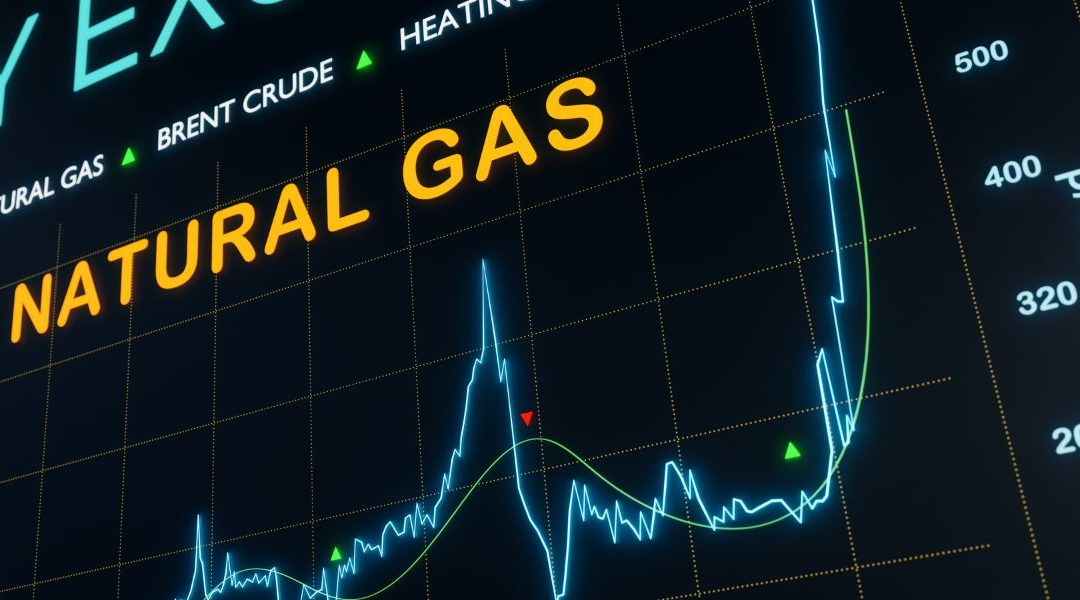After skyrocketing for most of the past year and a half, natural gas prices are finally headed in the other direction. The mildest January and February in 43 years, coupled with a reduction in natural gas exports and strong production of hydro and wind, has shifted U.S. gas supplies from a shortage to a surplus three times greater than the five-year average, devaluing the commodity and giving end users a welcome price break. Considering that gas makes up 40% of electricity generation in the U.S., the recent downturn could greatly impact the overall cost of your entire energy mix.
But you don’t have long to capture the savings.
Indeed, gas prices are extremely volatile, and all signs point to major increases on the horizon along with growing long-term market risks. With the Henry Hub Natural Gas Spot Price currently at a 52-week low, a near-term bottom may be in sight this spring. If you want to take advantage of the long-awaited buying opportunity, act fast to lock in long-term contracts at currently fair price levels before this rare procurement window closes.
These four factors will begin driving natural gas prices higher again soon:
- Freeport LGN has the go-ahead to come back online, which will reduce domestic gas supply.
Natural gas exports—which soared at the onset of Russia’s war in Ukraine—have dropped recently not only because Europe now has a better handle on its energy mix, but also because of the continuing Freeport Liquified Natural Gas (LNG) outage. Typically, LNG takes more than 14% of all U.S.-produced natural gas and ships it overseas, where producers can capture the significantly higher prices other countries are willing to pay. But with Freeport LGN offline since (June 8, 2022), the natural gas that usually goes overseas has stayed in the domestic supply.
That’s about to change. With the facility gearing up to reopen and several LNG projects planned this year, we expect LNG exports to explode in the coming months, decreasing domestic supply and driving domestic gas prices up sharply and rapidly.
- Extreme weather events will drive demand and stress infrastructure.
All you have to do is watch the headlines to know that severe weather events are increasingly common. And when they strike in places like California, Texas, and other markets nationwide that lack pipeline infrastructure, we see demand far exceed available supply. The result is capacity outages and tremendous price pressure on the commodity, not just in the affected markets, but around the nation.
- Increasing renewable requirements will raise energy costs across the board.
New and more stringent regional and national regulations and requirements are pushing utilities and suppliers nationwide to maintain a higher percentage of clean energy in their generation mix. We can only expect these requirements to continue to grow for companies of all sizes and across all industries. While there are clear advantages for all stakeholders, they come at a price. Clean energy is not only more expensive to generate and store, but it is also somewhat unreliable, all of which will drive up the total costs of energy.
- Coal-to-gas switching is going away soon.
Companies are about to lose one effective lever for controlling the demand for natural gas, and thus affecting the price point. In the past, when natural gas prices would creep too high, industrial clients had the option to switch to coal, decreasing demand and helping to balance the natural gas market price. But with more attention on the environmental implications of this ‘dirty’ option, new rules are eliminating the choice. The impact will be a higher demand for natural gas among companies in all types of industries.
Revisit your procurement approach now.
The opportunity to secure a natural gas contract at the most favorable prices we’ve seen in years is right now. We fully expect long-term natural gas and power prices to be significantly higher by the mid-to-late decade as factors converge to reduce the current surplus and restore the near-term market balance. The best thing your organization can do now is explore the options—while you still have them. Even if you’re currently in a contract, you can set up your next contract with a future start date based on today’s favorable market conditions and likely take advantage of significant savings for years to come.
Need help? Contact CCA to facilitate the RFP process and help you analyze your current savings opportunities while looking at ways to ensure budget certainty and mitigate market risks with a long-term procurement approach. We can’t control the supply and demand for natural gas. But we can help you act when the balance is most heavily in your favor.
Joe Scicutella is an energy procurement analyst for Cost Control Associates. He helps his clients obtain energy supply at the optimal price. He keeps his thumb on the pulse of the energy marketplace by monitoring supply, providing insights, working with suppliers to obtain pricing and negotiate contracts. Joe currently manages more than $2.5 billion in total client annual spend and has saved his clients more than $2.8mm on costs since July 2019. Learn more.

